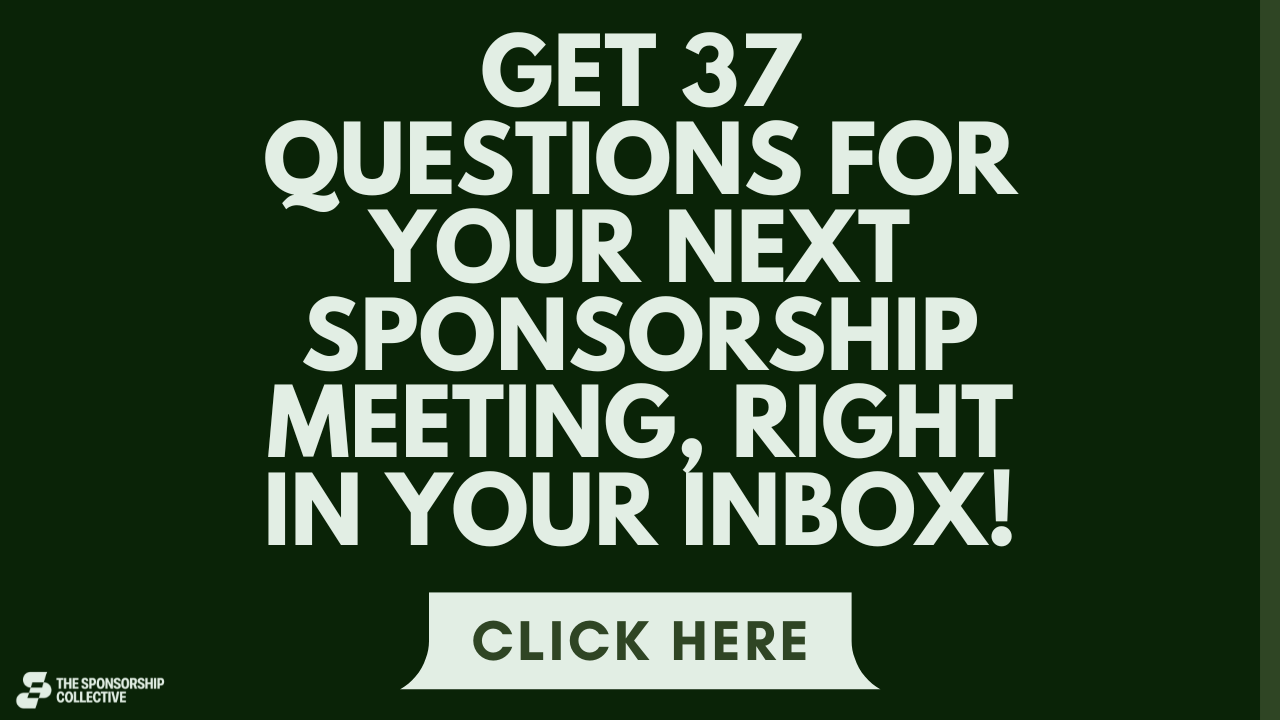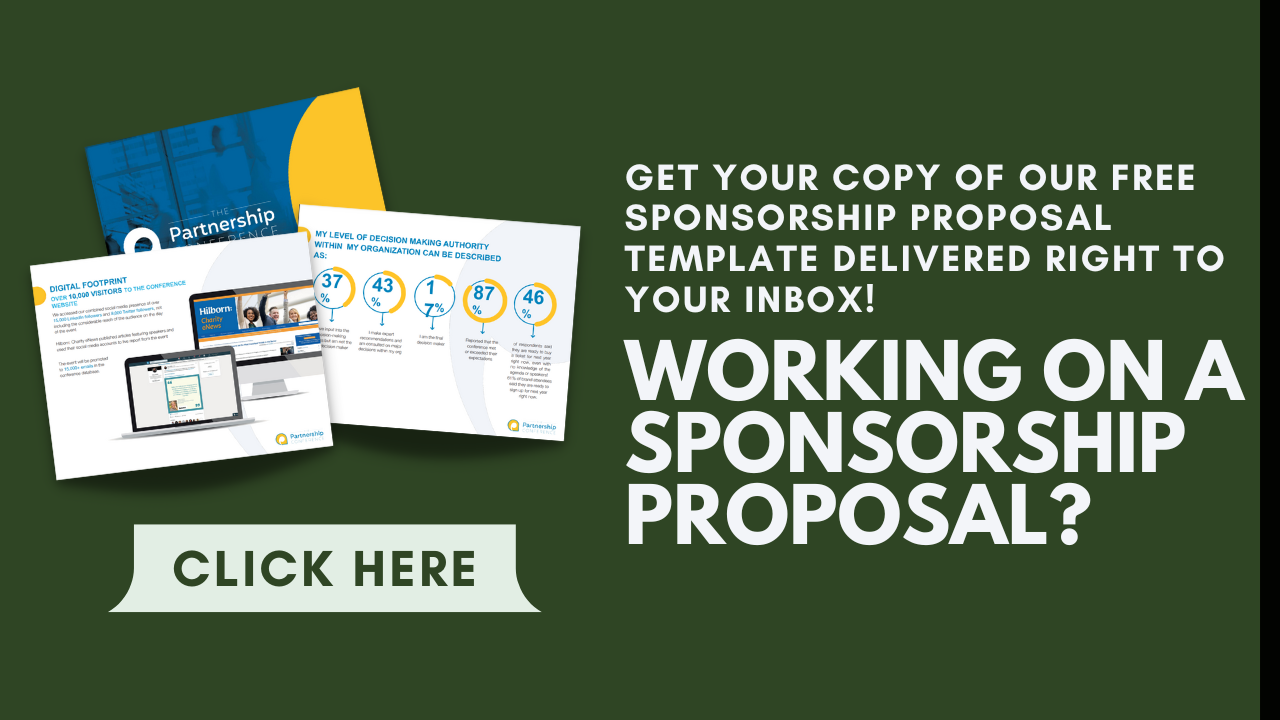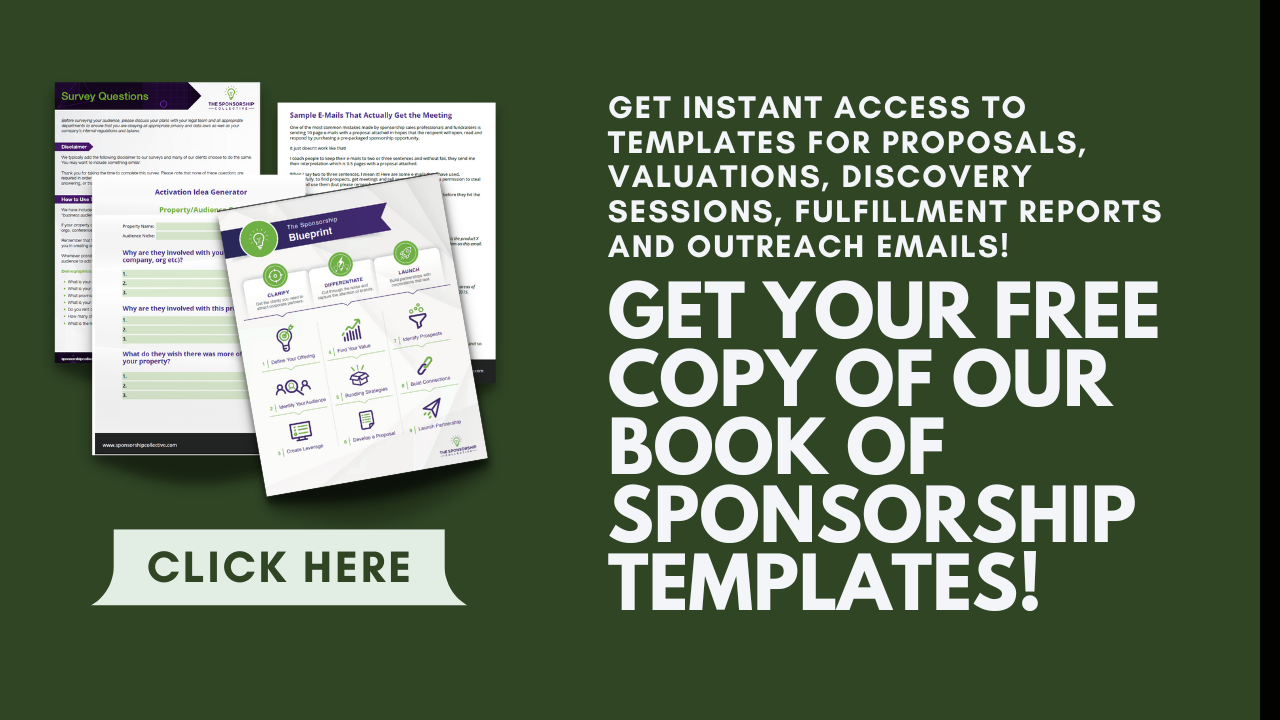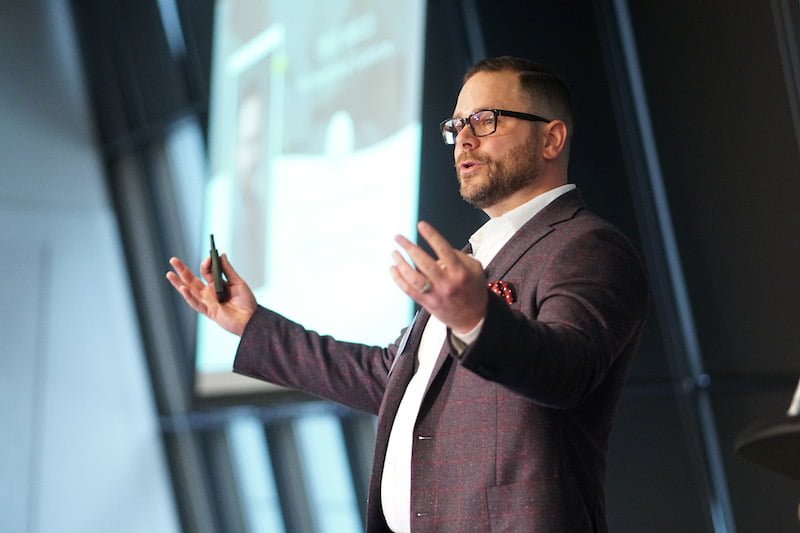Before you dive in, if you are interested in podcast sponsorship, check out these titles in our “sponsorship for podcasters” series:
- Sponsorship for Influencers
- Podcast Sponsorship Opportunities: 5 Examples of Sponsorship Done Well
- The Complete Guide to Podcast Sponsorship
- How to Create a Podcast Sponsorship Agreement
- How to Get Sponsorships for Podcasts: 6 Steps to Success
- How to Market Your Podcast
- How to Grow a Podcast
- How to Get Sponsorship for your Youtube Channel
- How Much Should You Charge for Podcast Sponsorship
Your podcast has grown to the point where sponsorship is now a viable option. Through this blog, you’re starting to put together your sponsorship program, but there’s one area you’re struggling with: the sponsorship proposal. You want to write an informative, engaging proposal that sponsors will react well to.
How do you do it?
Here’s how to create a podcast sponsorship proposal:
- Focus on audience data
- Be ready to talk less about yourself than you’d think
- Take time to create great assets
- Include case studies
- Provide experiential marketing ideas
- Don’t copy others
- Make it very easy to contact you
Although the above steps make it sound easy, there are certain nuances in putting together a sponsorship proposal. Ahead, I’ll elaborate on each of these seven pointers so you can write proposals that will entice podcast sponsors!

7 Steps for Writing a Winning Podcast Sponsorship Proposal

Focus on Audience Data
If you read my guide on what to charge for podcast sponsorship, then you might recall the quote I mentioned pertaining to audience data. That quote is that the riches are in the niches.
What the heck does that even mean? It’s simple. Niched-down audience data is far more valuable than generalized segments are.
Imagine for a moment that you’re a marketer. You’re paying for an Internet advertisement such as a display ad. Would you rather your ad be catered to a broad group of 20-to-30-year-old women or 25-year-old women making $72k per year and working in event planning?
Broader audiences might seem like the answer because there are more people in them, but they’re not the audience segment you want to target. Sure, your 20-to-30 group is a lot bigger, but what if the women in that group can’t afford your product or service because they don’t make enough money?
Now you can see the value of niched audience groups.
Your sponsor likes niched audience data because it makes things easier for them. They can see that your podcast listeners are predominantly male or female or earn X amount and live in Y area. Then the sponsor can quickly determine if your audience overlaps with their target audience.
Your entire podcast audience database won’t be a match for the sponsor’s target audience (more than likely), but if a few of your segments are desirable to the sponsor, now you’ve caught their interest.
I always liken niching down your audience segments to opening Russian nesting dolls. Keep going until the nesting dolls are so small you can’t open another. That’s how you know you’ve explored all the possible niches for that audience segment.
By the time you sit down to write your podcast sponsorship proposal, you should have had an initial discovery session with the sponsor where you asked them questions about their needs, pain points, and audience goals.
Take a few of your audience segments that are most relevant to the sponsor and create buyer personas or avatars for each.
Let’s go back to the example of 25-year-old women who are event planners and earn $73k per year. The buyer persona for this audience segment could be named Event Planner Eve. She’s a busy woman who works long hours. She needs a product or service that can save her time when she’s at home since her personal hours are few.
Highlight each of the buyer personas in your podcast sponsorship proposal. This gives some life and character to your audience segments, which sponsors can appreciate.
Be Ready to Talk Less About Yourself Than You’d Think
Many first-time sponsorship seekers get excited about writing the sponsorship proposal because they think it will be a great chance to write pages and pages about their company or organization and discuss their cause.
Then I have to break it to them that that’s not the purpose of the sponsorship proposal. It’s not a sales tool. It’s also not a biography highlighting your many great achievements (save that for your website!).
Instead, the sponsorship proposal is a succinct document. It should contain no more than six pages: the title page, the audience listenership page, the opportunity page, the sponsorship asset menu, the activations page, and the contact page.
That’s it. On the third page, you get three paragraphs to write about your podcast sponsorship opportunity.
The first paragraph is about your cause, including the background of your podcast and why you do what you do. The second paragraph is about your upcoming event or opportunity, and the third paragraph is dedicated to your attendees, users, etc.
That’s right, there’s but a single paragraph for your podcast’s history, so you have to keep it short. I wrote a handy sponsorship proposal template that you can follow as you put together your own proposal. The template is general enough that it’s applicable for all industries, including podcasting.
Take the Time to Create Great Assets
If there’s one takeaway I want you to get from this guide (besides that audience data is everything), it’s that advertising is far from the only asset you can offer a sponsor.
I know, a podcast ad is the first idea that comes to mind. You’ve also heard of countless other podcasters offering ads to sponsors, including podcasters who have a bigger following than you.
Sponsorship is rarely about following in someone else’s footsteps, especially because most of the time, those footsteps are wrong. I’ll talk more about this a little later.
If you can show your sponsor that sponsorship is about more than just advertising, you’ll grab their attention.
So what can you sell to your sponsor instead? I talked about this in my post on podcast sponsorship asset valuation, but here’s what I recommend.
Provide VIP experiences, perhaps as a contest prize. The winner gets the royal treatment courtesy of the sponsor. VIP experiences treat your listeners like gold and allow the lucky winner to sample a variety of the sponsor’s products and services.
Speaking of contests, those will never get tired. Contests and giveaways resonate with people for a few reasons. For one, who doesn’t like winning? Plus, a contest is a chance to get free stuff, which is also a powerful motivator to the average consumer.
Product placement is another way of introducing the sponsor to your audience but in a more natural, even organic type of way. You’ll have to get creative about how you bring in the product or service, but it’s doable.
Depending on your audience, they might appreciate a subtler means of product placement, or they’ll be okay with being clobbered over the head with product advertising.
Don’t forget to utilize guest speakers too! This is a highly valuable asset, as the sponsor does all the advertising of themselves for themselves.
If it’s relevant to your podcast topic, make an app with the sponsor. You’ll glean audience data like never before through your app.
Of course, your podcasting app has to provide value to the average downloader or no one will bother with it. Maybe it’s an app made for your upcoming event, for example.

Include Case Studies
Think back to the history of your podcast. Surely, between those terrifying but incredible early days and now, you’ve worked with somebody else or even a company. Even if no money changed hands as part of the deal, the details of this arrangement can be added to your case study if it produced positive results of any kind.
A case study showcases a problem that the other person or company had and how your podcast was able to fix it. For instance, maybe a fledgling local small business heard about your podcast and inquired about being featured on an episode to get the word out about themselves.
You obliged and the small business had X amount more shoppers or earned Y more revenue in the month following their podcast appearance.
To a sponsor, this proves that you can get things done and help a person or business earn more ROI.
I always recommend including at least one case study in your podcast sponsorship proposal. If you have more than one to share, then do it!
Provide Experiential Marketing Ideas
No sponsorship proposal is complete without activation opportunities. Activations are a form of experiential marketing. If your podcast is ever involved in physical or digital events or livestreams, then the floor is open for activations.
How do you come up with activations? Sponsorship seekers can wrack their brains trying to, especially those who are pursuing sponsorship for only the first or second time.
In this post, I have some pointers that will get you started with your own activation ideas.
I’d suggest looking to your audience for guidance. If you’ve ever been a part of an event that your audience joined in on too, ask them their thoughts and feelings about the event. What parts did they most enjoy versus least enjoy? What features did they like or hate? Once you know what your audience likes, you can get the ball rolling on activations.
The best activation ideas are rarely the most expensive or the flashiest. Instead, they’re the ones that fulfill a need of your listeners and a need of your sponsor.
You’ll have to be 100 percent certain of your audience data to this point. If you haven’t yet niched down and created audience personas with pain points, please do so. If you have further questions on what the sponsor needs, make sure you’re crystal clear. It’s okay to call, email, or meet with the sponsor to get the data you require.
I’d also advise you to invite the sponsor’s involvement when planning your activation ideas. They want to help you, and their unique take on their company’s issues is a vantage point that you just don’t have. Together with the sponsor’s guidance, you can come up with impactful activations.
Don’t Copy Others
I said I would talk about borrowing from others, so let me do that now.
If you do a Google search for “sponsorship proposals,” you’re going to find many resources besides what’s on my blog. I’d bet you can even do better than templates. You can find real sponsorship proposals that real companies have put online.
Cool! This is like hitting the jackpot. You can just copy their proposal, inputting your information where it fits. Maybe you’ll use their asset pricing as a guide for your assets as well. After all, why did they post this information online if it didn’t get them a sponsorship?
I can think of one reason right off the bat. Sponsorship seekers who don’t know any better will post their sponsorship proposal on their website thinking it will help them land a sponsorship deal.
It often doesn’t though. Sponsors don’t want to see your proposal at the beginning or even midway through the sponsorship process. They want to see it when they’re ready to see it, and that can take one meeting or five. But I digress.
You can’t guarantee that the sponsorship proposal you found online actually won that company sponsorship. By copying it, you could be perpetuating the same mistakes they made.
Maybe it’s not the end of the world if your proposal has a few formatting hiccups because you copied someone, but if you overprice your assets based on what you saw online, your podcast sponsorship program is dead in the water.
I wrote a post about how you cannot copy your competitors when it comes to pricing your assets that I recommend you read. Use their numbers to inspire you, but don’t directly lift their information. It’s probably wrong.

Make It Very Easy to Contact You
My last podcast sponsorship proposal tip is this: spend some time on the last page of the proposal.
You want to include a call to action or CTA paragraph or statement and then add your contact information on this page. All of it. Your social handles, business phone number, podcast phone line, email address, the whole ball of wax.
Giving the sponsor all your contact info doesn’t increase the likelihood of them contacting you. However, should they want to get in touch, you just made it a lot easier to do so, and anyone will appreciate that.
Conclusion
Writing a podcast sponsorship proposal that sponsors will love means having strong audience data, assets to offer besides advertisements, creative activations, and case studies. Now you’re ready to begin propelling your sponsorship program forward.
- About the Author
- Latest Posts
Chris Baylis is the Founder and Editor-in-Chief of The Sponsorship Collective.
After spending several years in the field as a sponsorship professional and consultant, Chris now spends his time working with clients to help them understand their audiences, build activations that sponsors want, apply market values to their assets and build strategies that drive sales.
Read More about Chris Baylis

